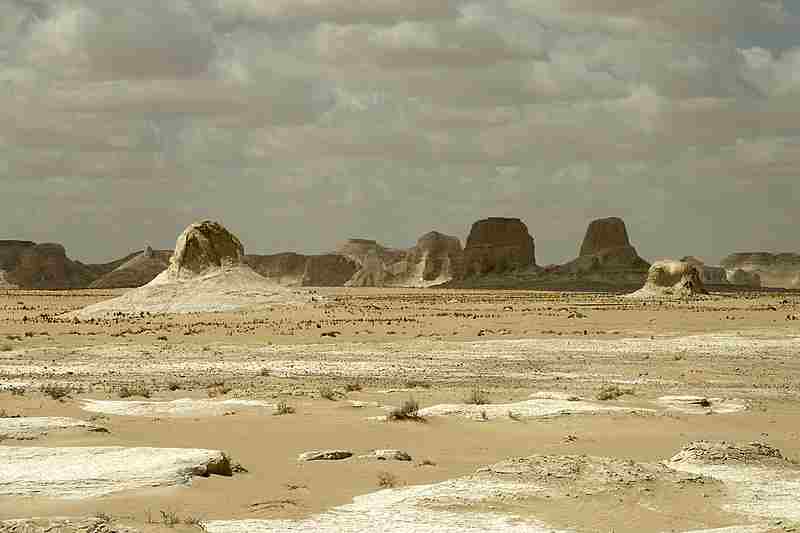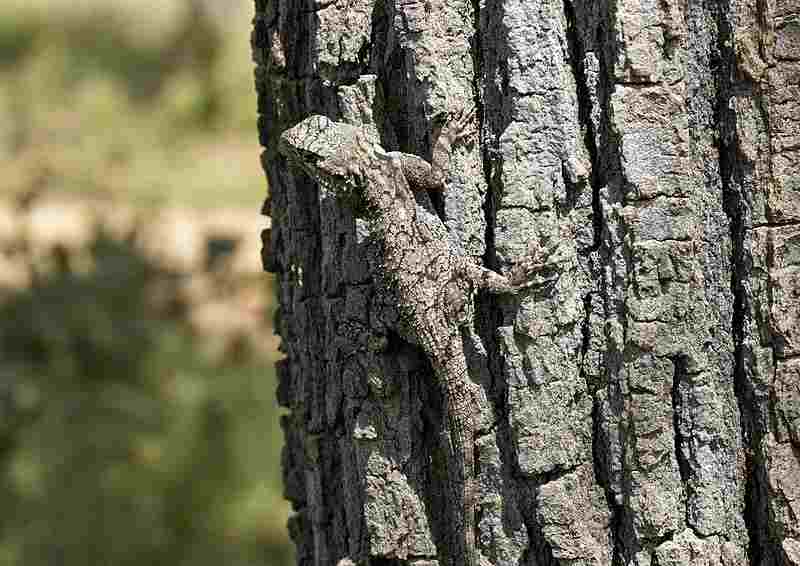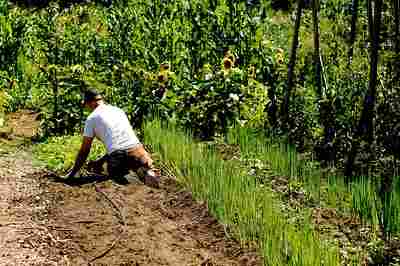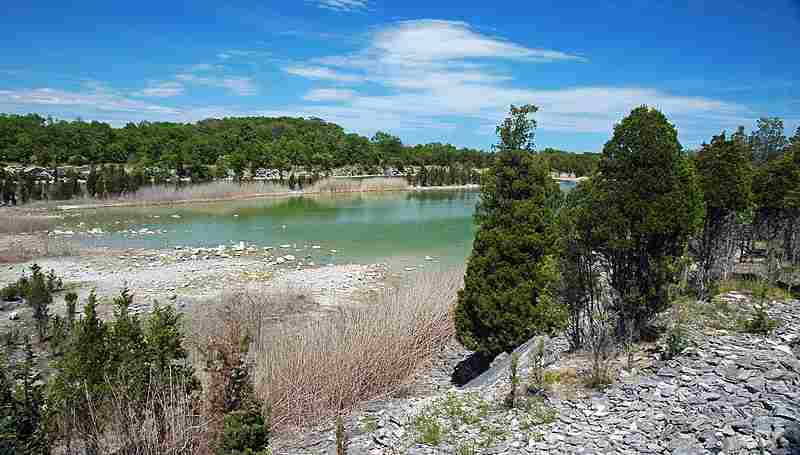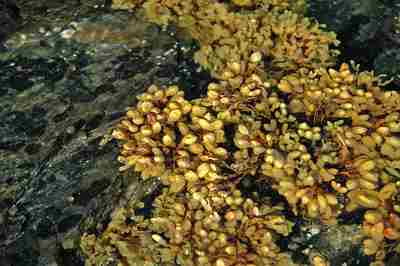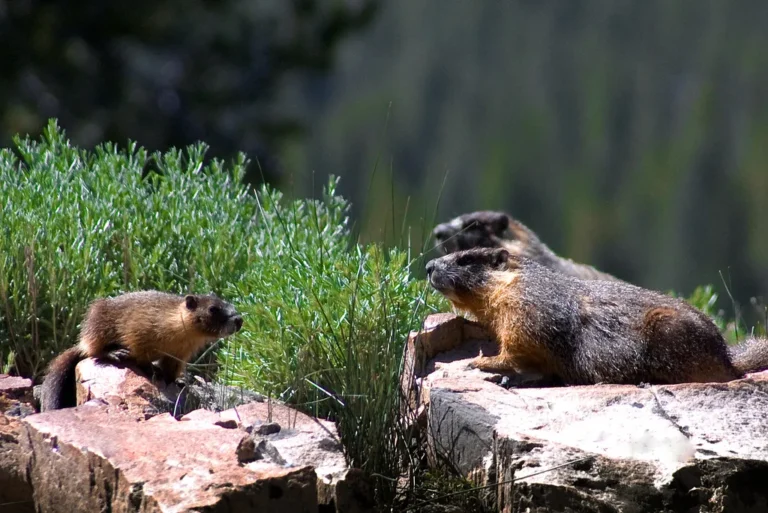Description of a Desert Based On 7 Criteria
Description of a desert can be carried out on the basis of criteria like; origin and evolution, climate, vegetation, soil conditions, water availability, biodiversity, and adaptive requirements.
This article discusses the description of a desert ecosystem, using multiple criteria, as follows;
1). Origin and Evolution (as a criterion for the Description of a Desert Ecosystem)
Desert ecosystems can be described as unique landscapes, characterized by their extreme aridity and sparse-growth of vegetation.
These ecosystems have evolved over millions of years and are the outcomes of various geological and climatic phenomena.
The origin and evolution of desert ecosystems can be used to describe and distinguish them from other ecosystems. Desert evolutionary processes also contribute to their distinct features.
Factors Involved in The Origin and Evolution of Deserts
The factors involved in desert origin and evolution include geological, climatic and biogeochemical factors respectively. They are each discussed below;
Scarcity or absolute lack of rainfall, is a condition under which deserts are formed.
The geological history of deserts also comprises of the interplay of tectonic processes, which determine the topography and landform-patterns of the region [4].
Over millions of years, movements of tectonic plates can contribute to the creation of arid landscape features such as and basins, and mountain ranges that contribute to rain shadow effects.
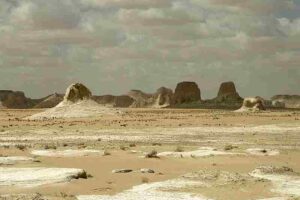
Climate changes can also be considered a major factor involved in the development of deserts.
Desertification can occur as a result of shifts in climatic patterns, caused by factors like changes in Earth's orbit, axial tilt, and intensity of solar radiation. Over geological timescales, such changes can lead to prolonged periods of drought, which in turn cause the establishment of desert conditions.
Scientific evidence suggests that the formation of deserts may have occurred during humid periods in the geological past. Aridification cycles occur repetitively over millions of years, causing previously humid areas to transition into dry desert environments.
Distinguishing Deserts Based on Their Origin and Evolution
Deserts are distinguished from other ecosystems mainly by their extreme arid conditions, which are caused by a combination of geological, climatic, and ecological factors.
The geological history of deserts involves the interplay of tectonic processes, climate alternations, and aridification cycles over millions of years.
Movements of tectonic plates contribute to the formation of desert landscape-features, and shifts in climate patterns can result in prolonged periods of drought, which in turn cause the establishment of desert conditions.
Aridification cycles can force previously-humid zones to transition into arid environments.
2). Climate
The climate of a desert ecosystem is one of the key defining features that distinguishes deserts from other ecosystems.
Deserts are characterized by extreme aridity, relatively-high temperatures, and very low humidity. These climatic conditions have significant impact on the plants, animals, and overall ecosystem-dynamics of desert regions.
Climate Characteristics of a Desert Ecosystem
Climate characteristics of a desert include low humidity, extreme temperatures, and minimal precipitation.
A severe lack of moisture is typical of deserts, and leads to arid conditions. This can be attributed to the fact that precipitation in deserts is extremely low, usually not exceeding 25 centimeters (10 inches) per annum [1].
Wide temperature variations are experienced in deserts between day and night. Daily highs can reach around 30-35°C (86-95°F), with peaks of 40°C (104°F) or above [7]. On the other hand, nighttime temperatures can drop significantly due to radiative cooling.
As earlier implied, relative humidity in deserts is very low compared to other ecosystems, and contributes to the perception of a dry heat. The arid conditions lead to rapid evaporation, and result in low levels of atmospheric moisture.

The climatic conditions in deserts fosters sparse growth of vegetation, particularly due to the scarcity of water. Most deserts are characterized by minimal plant growth, with trees being often absent, or limited to specific microhabitats.
On the overall, deserts can be described based on their tendency to receive very little rainfall, with the rate of evaporation often exceeding annual precipitation [12]. This has geologic and edaphic consequences, as it often leads to the accumulation of salts in the soil and affects its composition.
Conclusive Overview of Climate in The Desert
Five characteristics of desert climate are; extreme aridity, high temperatures, minimal precipitation, low humidity, and wide temperature variations between day and night.
These conditions support the growth of sparse vegetation, which is another feature that can be used in the description of a desert.
3). Vegetation (as a criterion for the Description of a Desert Ecosystem)
Vegetation is a definitive biotic factor in the desert ecosystem, that distinguishes it from other biomes.
Adaptations of desert plants include numerous traits which they have evolved in order to survive in the harsh and arid conditions of these regions.
Such adaptations play a huge role in shaping the unique plant community that inhabit desert environments.
As stated in earlier sections of this article, vegetation in the desert is sparse compared to that found in richer ecosystems like tropical rainforests and even grasslands.
Vegetation Characteristics of a Desert Ecosystem
Some characteristics of desert vegetation are; xerophytic adaptation(s), reduced leaf surface, water storage, leafless morphology, thorniness and fleshy stems.
Xerophytic adaptations occur in desert plants as specialized equipment to cope with limited water-availability. Several plants, including succulents like cacti, possess specially evolved root systems for rapid water absorption after rare rainfall events.
Another feature that enables desert plants to achieve water conservation and minimize water loss through mechanisms like transpiration, is reduced leaf surface area, or generally-modified leaves. Some desert plants have narrow-elongate and/or needle-like leaves or waxy coverings that help them retain moisture.

Water storage is achieved by many desert plants using their tissues, which absorb and retain water to allow them to survive during prolonged periods of drought. Succulents have absorbent components like stems that become swollen when they store water, and make them appear plump.
Leaflessness is another attribute of some desert plants, which shed their leaves as a strategy to conserve water. Such leafless conditions can be absolute or seasonal, and reduce the dehydration-risk associated with transpiration.
Thorns and spines are defensive structures found on many desert plants, and meant for deterring herbivores as well as reducing water loss.
Overview of Desert Vegetation
The vegetation of deserts consists mainly of xerophytes that possess adaptations for coping with arid conditions. Examples of common desert plants include cacti, acacia, some palm species, and shrubs like salt bush and buckwheat bush.
A desert plant can be described as any of various plant species adapted to thrive in arid regions with limited rainfall. It often possesses xerophytic adaptations like reduced leaf surface and water-storage mechanisms, and may exhibit other features such as thorns.
In hot and dry deserts, vegetation is typically comprised of sparsely-distributed, short woody trees and ground-hugging shrubs. Examples of plants found in hot and dry deserts include turpentine bush, prickly pear, brittle bush, and creosote bush.
4). Soil Conditions
Soil conditions in a desert ecosystem are also useful in distinguishing it from other ecosystems.
Desert soils exhibit unique characteristics that have developed as a result of the extreme conditions occurring in these regions.
Characteristics of Desert Soils
Characteristics of desert soils include texture variability, low nitrogen and organic matter-content, high carbonate content, and alkaline conditions. While all these attributes may not occur together in a single location, they are representative of the general range of features associated with soil in the desert.
Texture variability implies that desert soils can vary greatly in texture, ranging from gravelly and sandy to layers of silt and clay, or rigid carbonate horizons. This variability can be attributed to environmental factors like limited water and organic matter in the soil.
Low nitrogen and (moderate to low) organic matter concentration, are both typical attributes of desert soils [5].
This is a consequence of the predominant arid conditions, which limit the biodegradation of organic material.
Many desert soils also contain high levels of calcium carbonate deposits. This feature is region-specific, and contributes to their alkaline nature.
In general, desert soils tend to be alkaline, having a pH value above 7 [13]. The low precipitation in desert regions prevents the leaching of minerals, and results in the accumulation of alkaline compounds.
Some desert soils feature a hard, planar layer known as desert pavement, which comprises of small rock fragments that accumulate over time due to erosion and other processes [10].

Overview of Desert Soils, Cold-Desert Sedimentology
Soils in cold deserts share basic characteristics with those in hot deserts. They often possess features like dry surface horizons, desert pavement, water-soluble salt zones, and a frozen underlying layer [2].
Desert soils are often basic (alkaline) due to a combination of factors, including limited rainfall that prevents soluble-mineral leaching, and the long-term accumulation of alkaline compounds containing metallic elements like potassium, calcium, and magnesium.
The absence of rain in desert regions, reduces soil acidity that would otherwise result from chemical reactions involving water.
5). Water Availability (as a criterion for the Description of a Desert Ecosystem)
Water availability can be used to define or describe desert ecosystems.
Deserts are characterized by extreme aridity and limited availability of water sources, which have are among core factors behind the unique features of these environments.
Water Sources in the Desert
Sources of water in the desert are, rainfall, underground aquifers, springs, wells, and seasonal streams.
Rain is the most prominent source of water in deserts, although it falls infrequently and in limited amounts.
As earlier pointed out, deserts receive minimal annual precipitation, often less than 25 centimeters (10 inches) a year.
Groundwater is another crucial water resource in deserts. It is stored in underground aquifers where it can remain entrapped for thousands of years. Several desert dwellers, including plants, animals, and human communities, rely on this water reserve for their sustenance.
Springs and wells are important water sources in desert regions. They are replenished/recharged by occasional rains, and the infiltration of runoff water from nearby foothills and mountain ranges.
Some deserts also play host to temporary streams that form during rare rain events [6]. These ephemeral streams flow for a short period (during which they serve as water sources) before drying up.
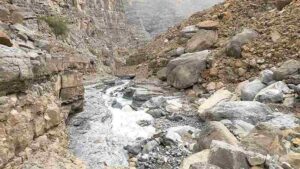
5 Facts About Water Availability in the Desert
1. Most of the fresh water in deserts is stored underground in aquifers. This groundwater supports various forms of life and contributes to the formation of caves (through the dissolution of limestone).
2. Water in deserts is scarce, and the available sources are often sporadic and localized. This scarcity influences the distribution and adaptation of desert flora and fauna.
3. These plants and animals have evolved unique adaptations to survive under conditions of limited water availability. They often possess structures and mechanisms to minimize water loss.
4. Human communities in desert regions often rely on groundwater sources for irrigation and other forms of domestic consumption. These sources are critical for sustaining settlements and agricultural activity.
5. Water availability in deserts is highly variable in general, with intermittent periods of rainfall followed by extensive dry spells.
Conclusive Overview of Water Availability in Desert Ecosystems
The primary water supply in deserts comes from rain, which falls infrequently.
Groundwater stored in underground aquifers is a crucial reserve of rainwater that can be extracted (or may come to the surface naturally in springs) to sustain various life forms in desert ecosystems.
Most of the fresh water in deserts is stored underground.
Springs, wells, and seasonal streams also contribute to water availability, but these sources are often localized and not consistent.
Water scarcity has led to the evolution of unique survival strategies for desert plants and animals.
6). Biodiversity
Biodiversity in a desert ecosystem is defined by a unique variety of life forms that have adapted to survive under arid conditions.
The low availability of water and generally-harsh environmental factors, contribute to the distinctive biodiversity that occurs in deserts, and distinguishes them from other ecosystems.
Attributes of Biodiversity in Deserts
Desert biodiversity is built upon organisms that have evolved specialized adaptations to thrive without regular access to water.
These adaptations include water conservation-capability, heat tolerance, and other drought-resistant strategies to endure long periods of dryness.
Both hot and cold deserts typically exhibit low biodiversity compared to more hospitable and resourceful environments. The extreme temperatures and scarcity of water, create challenging conditions for most forms of life.
In hot desert environments, the dominant plant species are often cacti and other succulents that store water in their tissues. These plants are adapted to minimize their water loss while maximizing storage.
Biodiversity in the desert tends to be higher near water sources like seasonal rivers, lakes, and oases [11]. These areas provide essential water and relatively mild micohabitats, both of which support increased species diversity.
Conservation efforts are important in maintaining desert biodiversity. National parks, wildlife reserves, and protected zones all restrict environmental impacts of human activities, preserving vital habitats for desert species.
Contrary to common perceptions, some deserts in fact exhibit unexpectedly high local diversity due to species' ability to adapt to specific microhabitats and niches within the desert region. This can only be considered 'low' when compared to the diversity of less-challenging environments.
Endangered species inhabit some deserts, having evolved to survive the challenges of such regions. The unique ecosystems of deserts, provide habitats for species found nowhere else.
Maintaining Biodiversity in Deserts
Biodiversity in the desert is maintained through habitat preservation, conservation efforts, restoration projects, species recovery programs, and research and education.
Protecting key habitats such as oasis areas and water sources is crucial for maintaining biodiversity in deserts.
Establishing and enforcing protected areas and conservation zones helps limit human impact and habitat destruction.
Restoration efforts, including habitat reconstruction and arid reforestation, can help restore damaged desert ecosystems and support biodiversity.
Focusing on the conservation of specific endangered species through breeding and release programs can contribute to maintaining biodiversity in deserts [3].
Studying desert ecosystems, understanding their biodiversity, and raising public awareness about their importance can foster support for conservation initiatives.
7). Adaptive Requirements (as a criterion for the Description of a Desert Ecosystem)
Adaptation is a fundamental aspect of life in a desert ecosystem, due to the extreme and harsh conditions that are prevalent.
The unique adaptive requirements of desert organisms distinguish them from those in other ecosystems, and determine their survival in an environment characterized by water scarcity, high temperatures, and challenging climatic conditions.
Adaptive Features in Desert Organisms
Many desert plants have evolved the attribute of succulence, which entails storing water in their tissues. This adaptation helps them to survive long periods of drought by drawing on stored water reserves during dry spells.
Both plant and animal adaptations in the desert center on mechanisms for tolerating drought. For instance, some plants possess specialized root systems that can tap into deep water sources, while some animals have specialized renal systems that can concentrate their urine to conserve water [9].
Some desert plants exhibit drought-avoidant strategies, such as short life cycles. Such plants complete their life cycle during the brief rainy periods, and produce seeds that can endure long periods of dormancy until the next rain.
Heat tolerance is another adaptive feature of desert organisms.
Desert organisms have adaptations to tolerate extreme temperatures. In animals, these include behaviors to avoid extreme heat, such as staying in burrows during the hottest parts of the day.

In order to minimize water loss through transpiration, desert plants may exhibit modified leaf-structures that include reduced surface area, and spiny or scaly morphology.
Nocturnal behavior is also fairly common among animals in deserts, which avoid daytime heat by being more active during the cooler nighttime hours.
Desert animals also often possess adaptations (physiological, behavioral) for thermal regulation, such as reflective (or in some case, heat-absorbing) coloration, to manage their body temperature.
Factors Driving Adaptation in Desert Organisms
Factors that facilitate adaptation in desert plants and animals include; extreme temperatures, drought and water scarcity, high evaporation rates, limited food sources, and predation.
Organisms in the desert must adapt to survive temperature fluctuations that range from intense daytime heat to freezing nighttime cold.
As stated in other sections, desert plants and animals must cope with limited water availability by developing strategies to maximize water utilization and storage.
Adaptations enable these organisms endure extended periods of drought, conserve water and minimize water losses. The arid nature of the desert, leads to rapid evaporation and transpiration, necessitating adaptations to reduce the rate at which water is lost to such processes.
Organisms must also adapt to find and utilize limited food sources, sometimes relying on specialized diets.
For organisms in lower levels of the desert food chain, adaptations to avoid predation include camouflage, protective coloration, and behavioral responses [8].
Many desert animals have developed burrowing behaviors to escape extreme temperatures and find refuge. Extreme temperatures are also behind the nocturnal life pattern of several desert animals.
Overview On Adaptive Features of Desert Organisms
Adaptive features of desert plants include succulence, drought tolerance, seasonal lifecycle, water storage, reduced leaf surface, and specialized root systems.
Adaptive features of desert animals include camouflage, heat-reflective coloration, burrowing, nocturnal behavior, and water-conserving kidneys.
Plants and animals in deserts must adapt to extreme temperatures, low water-availability, prolonged drought, high evaporation rates, and limited food sources.
Conclusion
The description of a desert ecosystem can be carried out based on criteria such as;
1. Origin and Evolution
2. Climate
3. Vegetation
4. Soil Conditions
5. Water Availability
6. Biodiversity
7. Adaptive Requirements
The table below summaries the description of a desert using these criteria;
Criterion | Descriptive Details |
Origin and Evolution | Tectonic processes, climate alternations, aridification cycles |
Climate | Extreme aridity, high temperatures, minimal precipitation, low humidity, wide temperature variations between day and night |
Vegetation | Xerophytic plants like; cacti, acacia, some palm species, salt bush, buckwheat bush, turpentine bush, prickly pears, brittle bush, creosote bush |
Soil Condition | Dry surface horizons, alkaline composition, low biomass and nutrient content, may feature desert pavements |
Water Availability | Primary water source is rainfall, supported by groundwater, springs, wells, seasonal streams |
Biodiversity | Significant, although low in comparison to other ecosystems, may be highest around the most humid zones |
Adaptive Requirements | Plant adaptations include; succulence, drought tolerance, seasonal lifecycle, water storage, reduced leaf surface, specialized root systems Animal adaptations include; camouflage, heat-reflective coloration, burrowing, nocturnal behavior, water-conserving kidneys Factors driving adaptation include; extreme temperatures, low water-availability, prolonged drought, high evaporation rates, and limited food sources |
References
1). Bhasin, V. (2000). "Socio-Cultural Adaptations in Cold Deserts." Journal of Human Ecology 11(3):215-234. Available at: https://doi.org/10.1080/09709274.2000.11907542. (Accessed 15 August 2023).
2). Campbell, B.; Claridge, G. G. C. (1982). "The influence of moisture on the development of soils of the cold deserts of antarctica." Geoderma. Available at: https://doi.org/10.1016/0016-7061(82)90004-0. (Accessed 15 August 2023).
3). Dolman, P. M.; Burnside, R. J.; Scotland, K..M.; Collar, N. J. (2021). "Captive breeding and the conservation of the threatened houbara bustards." Endangered Species Research 46. Available at: https://doi.org/10.3354/esr01151. (Accessed 25 August 2023).
4). Elmagd, K. A.; Ali-Bik, M.; Emam, A. (2015). "Geomorphic Evolution of The Kurkur-Dungul area in Response to Tectonic Uplifting and Climatic Changes, South Western Desert, Egypt." Available at: https://www.academia.edu/53375547/Geomorphic_Evolution_of_The_Kurkur_Dungul_area_in_Response_to_Tectonic_Uplifting_and_Climatic_Changes_South_Western_Desert_Egypt. (Accessed 15 August 2023).
5). Karimov, M.; Namozov, N.; Teshaboev, B. (2021). "Agrochemical properties of degraded desert sandy soils of Uzbekistan." E3S Web of Conferences 244:02025. Available at: https://doi.org/10.1051/e3sconf/202124402025. (Accessed 15 August 2023).
6). McDonough, O. T.; Hosen, J. D.; Palmer, M. (2011). "Temporary streams: The hydrology, geography, and ecology of non-perennially flowing waters." Available at: https://www.academia.edu/38106633/Temporary_streams_the_hydrology_geography_and_ecology_of_non_perennially_flowing_waters. (Accessed 15 August 2023).
7). Nassar, A. A.; Childs, R. D.; Boyle, M. E.; Jameson, K. A.; Fowke, M.; Waters, K. R.; Hovan, M. J.; Cook, C. B. (2010). "Diabetes in the Desert: What Do Patients Know about the Heat?" Journal of Diabetes Science and Technology 4(5):1156-63. Available at: https://doi.org/10.1177/193229681000400514. (Accessed 15 August 2023).
8). Nokelainen, O.; Brito, J. C.; Campos, J. C.; Scott-Samuel, N.; Valkonen, J.; Boratyński, Z. (2020). "Camouflage in arid environments: the case of Sahara-Sahel desert rodents." Journal of Vertebrate Biology 69(2):1. Available at: https://doi.org/10.25225/jvb.20007. (Accessed 15 August 2023).
9). Pannabecker, T. L. (2015). "Aquaporins in Desert Rodent Physiology." Biological Bulletin 229(1):120-8. Available at: https://doi.org/10.1086/BBLv229n1p120. (Accessed 15 August 2023).
10). Rostagno, C. M.; Degorgue, G. (2011). "Desert pavements as indicators of soil erosion on aridic soils in north-east Patagonia (Argentina)." Geomorphology 134(3):224-231. Available at: https://doi.org/10.1016/j.geomorph.2011.06.031. (Accessed 15 August 2023).
11). Souza, V.; Asuar, L. E.; Escalante, A. E.; Eguiarte, L. E.; Farmer, J. D.; Forney, L.; Lloret, L.; Rodriguez-Martinez, J.; Soberon, X.; Dirzo, R.; Elser, J. J. (2006). "An endangered oasis of aquatic microbial biodiversity in the Chihuahuan desert." Proceedings of the National Academy of Sciences 103(17):6565-70. Available at: https://doi.org/10.1073/pnas.0601434103. (Accessed 15 August 2023).
12). Starr, V. P.; Peixoto, J. P. (1958). "On the Global Balance of Water Vapor and the Hydrology of Deserts." Tellus Volume 10, Issue 2 p. 188-194. Available at: https://doi.org/10.1111/j.2153-3490.1958.tb02004.x. (Accessed 15 August 2023).
13). Xie, Y.; Yu, T.; Hou, Z.; Zhu, L.; Li, Z. (2022). "Changes in soil properties in different land use types in a desert-oasis ecotone, Inner Mongolia, China." Heliyon 8(8):e11508. Available at: https://doi.org/10.1016/j.heliyon.2022.e11508. (Accessed 15 August 2023).
